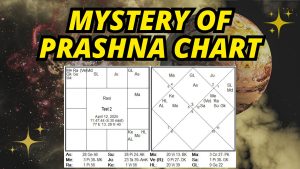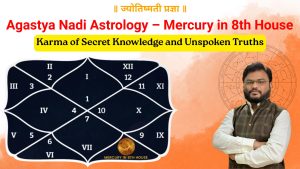12
JUL 2023
Vedic astrology is an ancient system of knowledge that originated in India and is based on the movements and positions of celestial bodies. It considers the Sun, Moon, planets and stars as indicators of the destiny and personality of a person, as well as the events and trends that affect their life.
The planets in Vedic astrology are not just physical objects in the sky, but also symbolic representations of various aspects of life. They have different characteristics, qualities, energies, and influences that shape the human experience. They also have different relationships with each other, which create various patterns and combinations that form the basis of horoscope analysis.
In this article, we will explore the planets in Vedic astrology, their significance, and how to use them in horoscope analysis.
The Planets in Vedic Astrology and Their Significance
There are nine planets or grahas in Vedic astrology. They are:
Sun (Surya): The Sun is the king of all planets and the source of light and life. It represents the soul, the self, the ego, the vitality, the leadership, and the authority. It also signifies the father, the government, the royalty, the fame, and the honor. The Sun rules over the zodiac sign of Leo and the nakshatra of Krittika.
Moon (Chandra): The Moon is the queen of all planets and the reflector of light. It represents the mind, the emotions, the intuition, the imagination, and the receptivity. It also signifies the mother, the home, the family, the nourishment, and the comfort. The Moon rules over the zodiac sign of Cancer and the nakshatra of Rohini.
Mercury (Budha): Mercury is the prince of all planets and the messenger of gods. It represents the communication, the intellect, the logic, the learning, and the curiosity. It also signifies the siblings, the friends, the commerce, the media, and the skills. Mercury rules over the zodiac signs of Gemini and Virgo and the nakshatras of Ashlesha and Revati.
Venus (Shukra): Venus is the princess of all planets and the guru of demons. It represents the love, the beauty, the harmony, the pleasure, and the art. It also signifies the spouse, the romance, the wealth, the luxury, and the creativity. Venus rules over the zodiac signs of Taurus and Libra and the nakshatras of Bharani and Purva Phalguni.
Mars (Mangala): Mars is the commander-in-chief of all planets and the god of war. It represents the action, the energy, the passion, the drive, and the courage. It also signifies the brothers, the enemies, the competition, the sports, and the violence. Mars rules over the zodiac signs of Aries and Scorpio and the nakshatras of Mrigashira, Chitra, and Dhanishta.
Jupiter (Guru): Jupiter is the teacher of all planets and the guru of gods. It represents the expansion, the abundance, the wisdom, the optimism, and the generosity. It also signifies the children, the education, the religion, the philosophy, and the morality. Jupiter rules over the zodiac signs of Sagittarius and Pisces and the nakshatras of Punarvasu, Vishakha, and Purva Bhadrapada.
Saturn (Shani): Saturn is the judge of all planets and the lord of karma. It represents the discipline, the responsibility, the karma, the endurance, and the maturity. It also signifies the elders, the servants, the workers, the hardships, and the delays. Saturn rules over the zodiac signs of Capricorn and Aquarius and the nakshatras of Pushya, Anuradha, and Uttara Bhadrapada.
Rahu (North Node): Rahu is the head of the dragon And the shadow planet. It represents the ambition, the innovation, the diversity, and the disruption. It also signifies the foreigners, the outcasts, the rebels, the illusions, and the obsessions. Rahu does not rule over any zodiac sign or nakshatra, but it co-rules over the nakshatra of Ardra, Swati, and Shatabhisha.
Ketu (South Node): Ketu is the tail of the dragon and the shadow planet. It represents the detachment, the spirituality, the liberation, and the dissolution. It also signifies the past lives, the renunciation, the isolation, the secrets, and the losses. Ketu does not rule over any zodiac sign or nakshatra, but it co-rules over the nakshatra of Ashwini, Magha, and Mula.
How to Use Them in Horoscope Analysis?
The planets in Vedic astrology can be used in horoscope analysis to understand various aspects of life and destiny. The planets can be analyzed by looking at their positions, aspects, conjunctions, exaltations, debilitations, retrogradations, combustions, transits, dashas, bhuktis, yogas, etc.
Positions: The positions of the planets in a horoscope show which house and sign they occupy. The house represents a certain area of life experience, such as health, wealth, career, marriage, etc. The sign represents a certain mode of expression, such as fire, earth, air, water; cardinal, fixed, mutable; positive, negative; etc. The position of a planet in a house and sign indicates how it influences that area of life and how it expresses itself.
Aspects: The aspects of the planets in a horoscope show how they interact with each other. The aspect is the angle between two planets measured from the earth. There are different types of aspects, such as conjunction (0 degrees), opposition (180 degrees), trine (120 degrees), square (90 degrees), sextile (60 degrees), etc. The aspect of a planet with another planet indicates how they cooperate or conflict with each other.
Conjunctions: The conjunctions of the planets in a horoscope show when they are in the same sign or house. The conjunction is the strongest aspect and it creates a fusion of energies. The conjunction of a planet with another planet indicates how they blend or merge with each other.
Exaltations: The exaltations of the planets in a horoscope show when they are in their highest state of expression. The exaltation is the sign or degree where a planet is most powerful and dignified. The exaltation of a planet indicates how it performs at its best.
Debilitations: The debilitations of the planets in a horoscope show when they are in their lowest state of expression. The debilitation is the sign or degree where a planet is most weak and afflicted. The debilitation of a planet indicates how it performs at its worst.
Retrogradations: The retrogradations of the planets in a horoscope show when they appear to move backwards in the sky. The retrogradation is an optical illusion caused by the relative motion of the earth and the planets. The retrogradation of a planet indicates how it revises or delays its actions.
Combustions: The combustions of the planets in a horoscope show when they are too close to the sun and lose their visibility. The combustion is a condition where a planet is within a certain degree from the sun and gets overshadowed by its rays. The combustion of a planet indicates how it loses its strength or identity.
Transits: The transits of the planets in a horoscope show when they move from one sign or house to another. The transit is the current position of a planet in relation to the natal chart. The transit of a planet indicates how it affects the present situation or event.
Dashas: The dashas of the planets in a horoscope show when they rule over certain periods of life. The dasha is a system of planetary cycles that divide life into different phases based on the natal chart. The dasha of a planet indicates how it influences the overall theme or direction of life.
Bhuktis: The bhuktis of the planets in a horoscope show when they sub-rule over certain sub-periods within dashas. The bhukti is a subdivision of dasha that gives more details about the specific effects of each planet. The bhukti of a planet indicates how it modifies or enhances the results of dasha.
Yogas: The yogas of the planets in a horoscope show when they form special combinations that produce specific results. The yoga is a configuration of planets that creates a certain effect or quality in life. The yoga of a planet indicates how it contributes to or detracts from the overall potential or fortune of a person.
These are some of the ways to use the Nakshatra in Vedic astrology for horoscope analysis. By studying the planets and their various factors, one can gain a deeper insight into one’s life and destiny, as well as the opportunities and challenges that lie ahead.
Vinayak Bhatt is one of the most well recognized Vedic Astrologer and Trainer of India. He is going to start his upcoming course for beginners. Learn Vedic Astrology Course in Hindi by Vinayak Bhatt. After completing this master course you’ll able to understand and predict astrological events easily.











